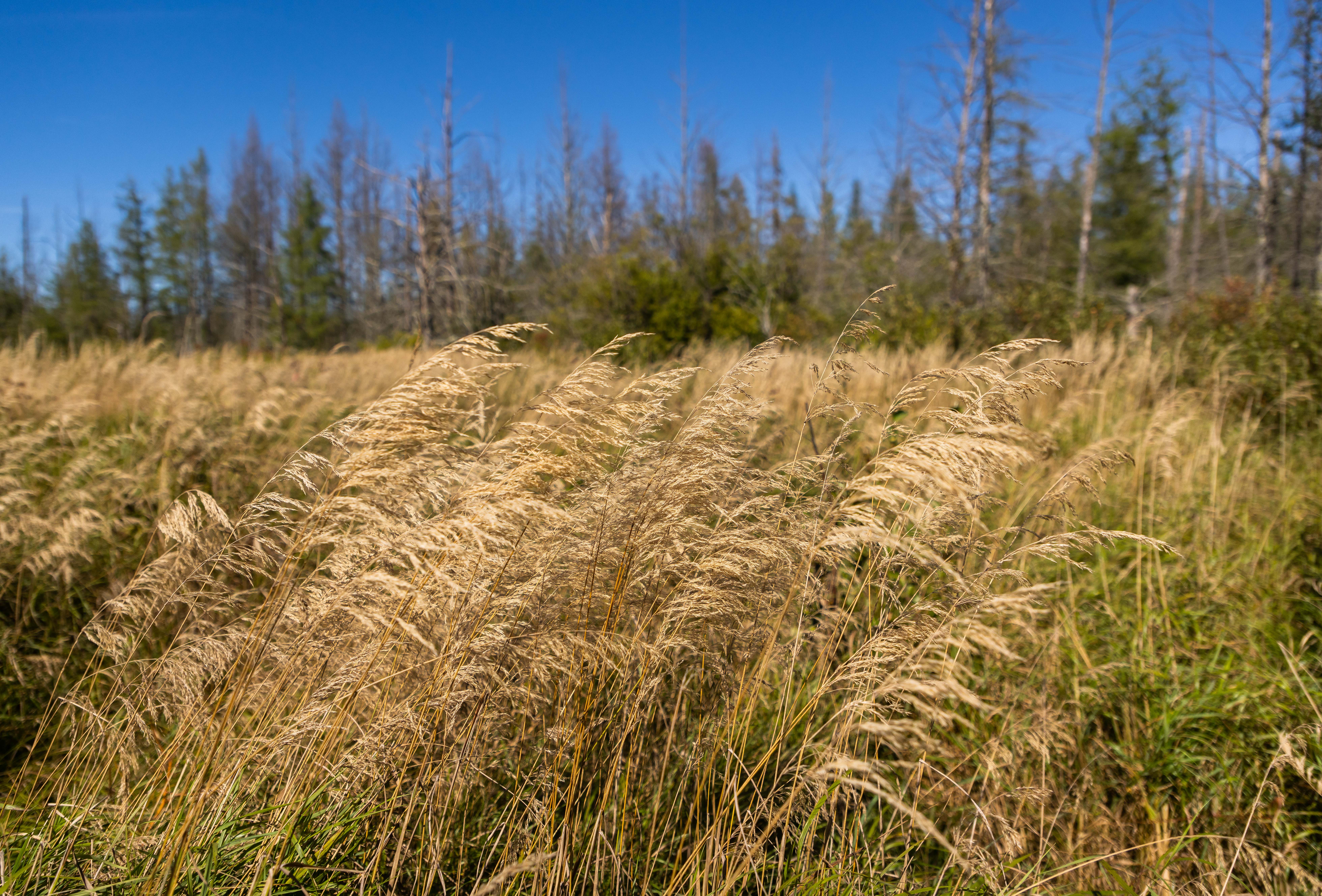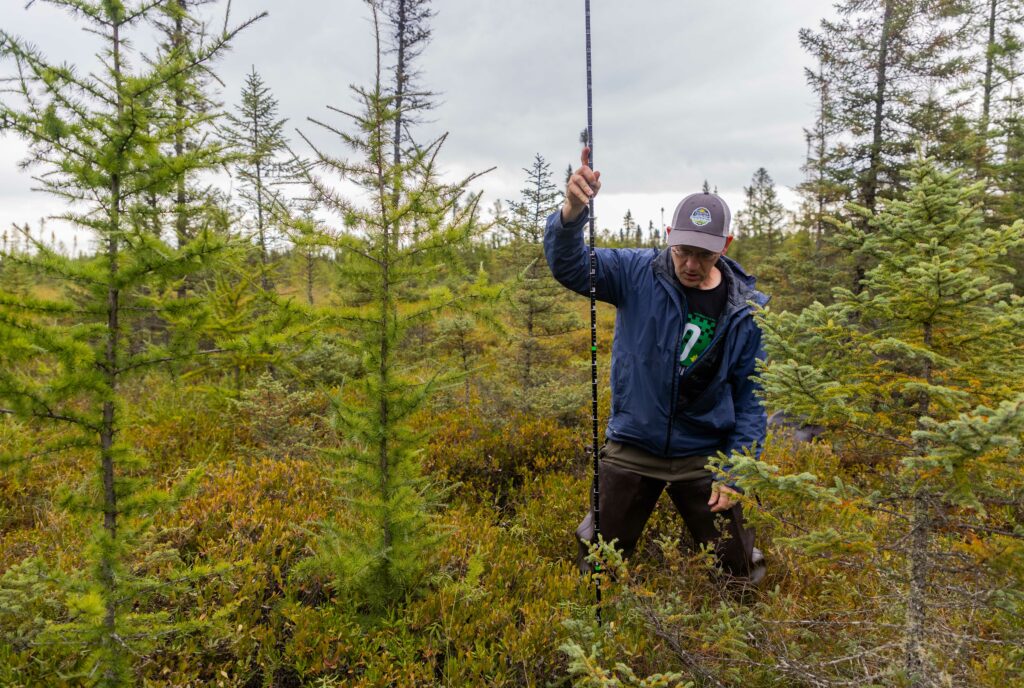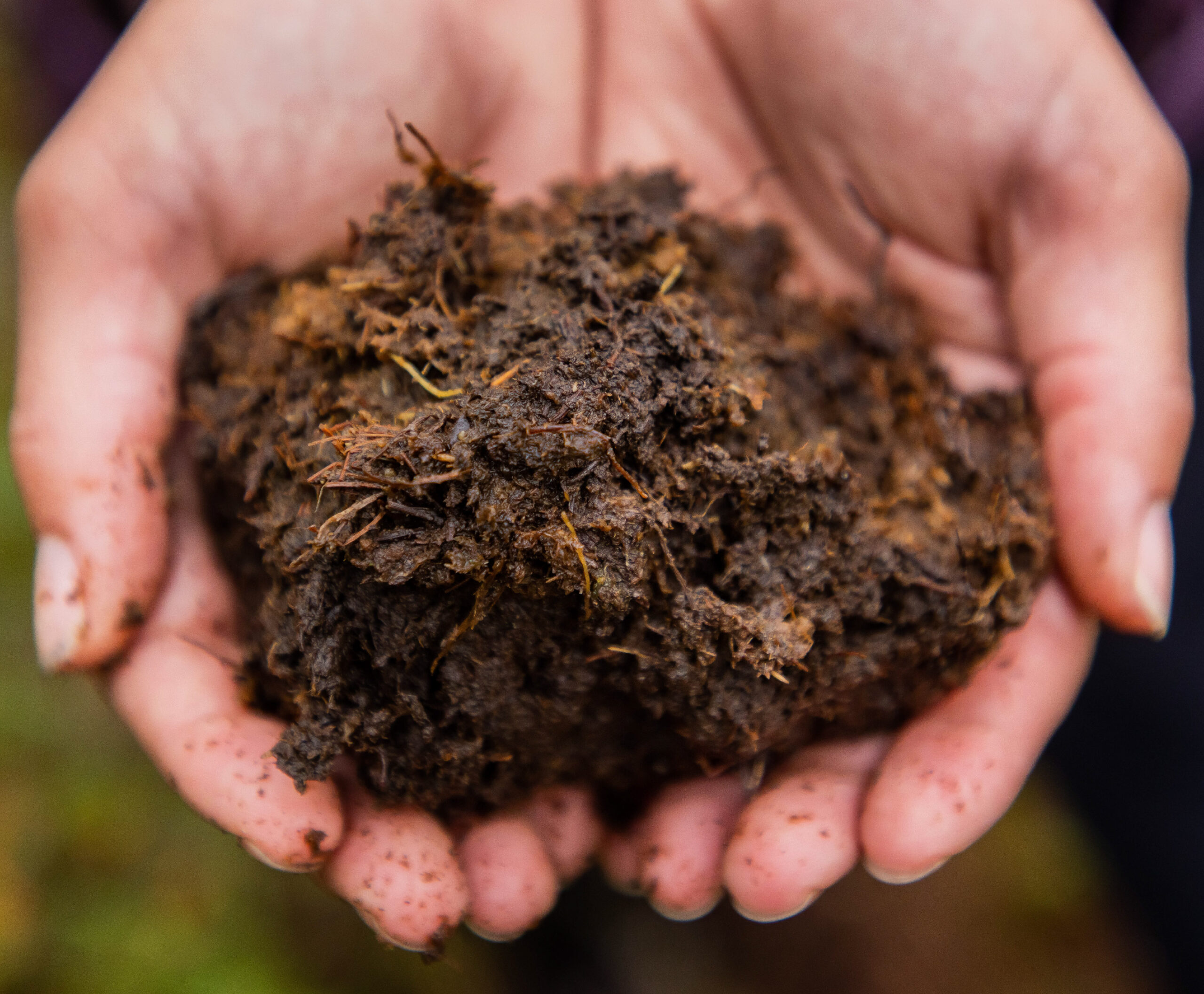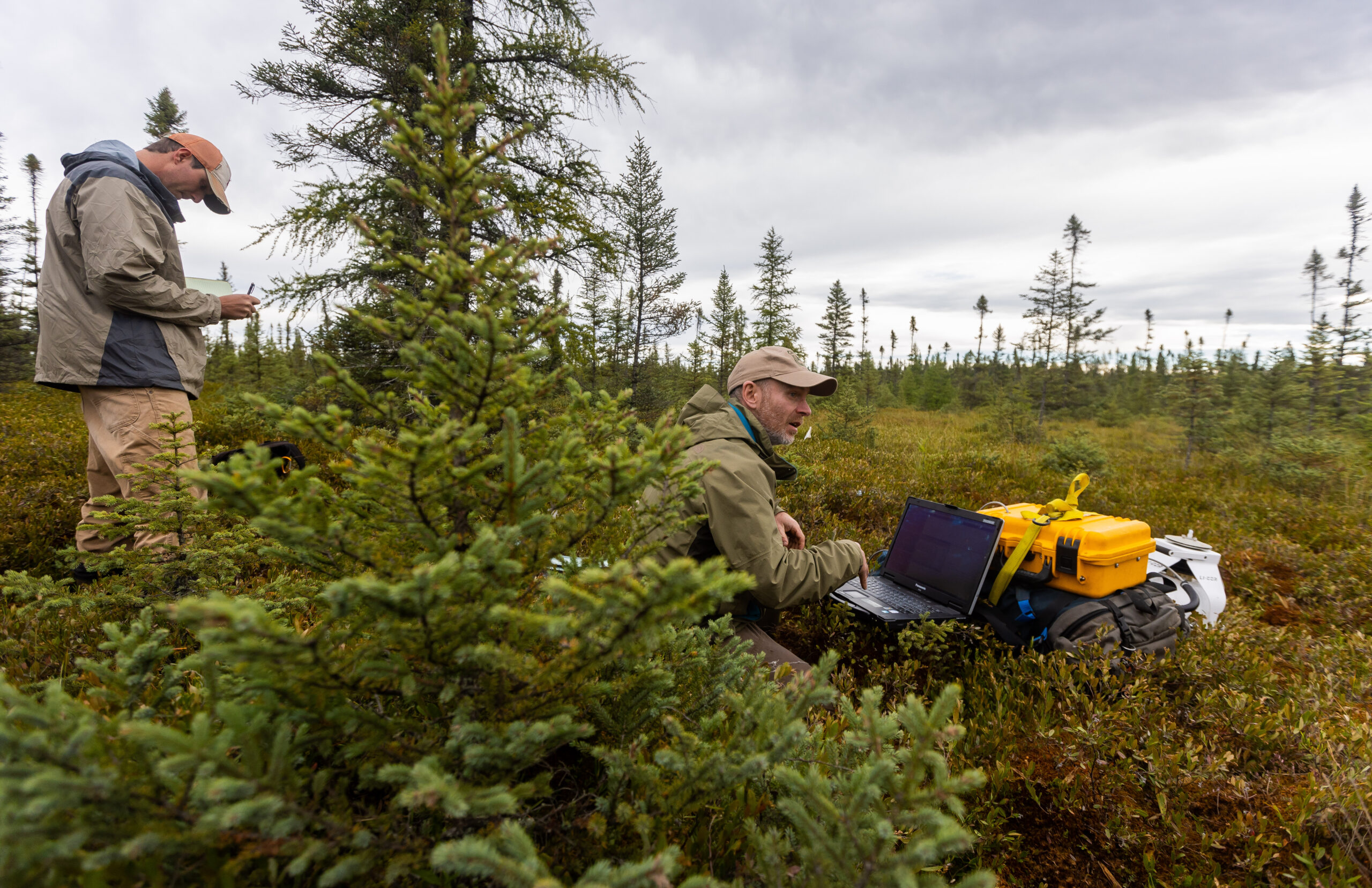
Peatland Restoration in Minnesota
Long misunderstood and unappreciated, are now gaining recognition for providing important environmental services such as flood and fire protection, and for being natural climate solution powerhouses. With more than 10% of Minnesota covered in peatlands, their importance to the state is significant.1

What difference does peatland restoration make for communities in Minnesota?
Peatlands help improve water quality and buffer against flooding and drought
Peatlands act as natural filters, trapping sediments, nutrients, and pollutants, which helps to neutralize acidity and store sulfur and nitrogen.2 Studies have shown that peatlands can significantly reduce the levels of pollutants in water, making them valuable for maintaining clean drinking water.3
Peatlands provide water storage, buffering against flooding and drought.4 Sphagnum mosses, common in peatlands, form floating mats that can absorb up to 20 times their weight in water, making peatlands excellent at storing water.1
Intact peatlands can resist fires
Since intact peatlands are water-saturated and thus less susceptible to catching fire,5,6 they can act as fire refuges for wildlife, while also preventing carbon emissions from wildfires.4,5,7,8
Drained or partially drained peatlands can fuel intense, long-lasting wildfires due to their carbon-rich content.4 For example, the 2021 Greenwood Fire in northern Minnesota burned over 26,000 acres, including several feet of peat soil in some areas.1,6
Peatlands support Minnesota’s $2.4 billion fishing industry by maintaining water quality and habitats
Minnesota’s fishing industry generates $2.4 billion annually9, and peatlands help sustain the ecosystems that support this industry (maintaining water quality, regulating hydrology, and providing essential habitat for fish and aquatic species). Additionally, many of Minnesota’s prime fishing lakes and rivers are influenced by peatland hydrology, making their restoration and protection vital for long-term fishing success.
Peatlands are biodiversity hotspots
Peatlands are biodiversity hotspots, home to many rare and endangered species. For instance, the Sax-Zim Bog hosts over 3,000 species of plants and animals, including many rare birds.1
Intact peatlands are an incredible carbon sink
Minnesota has over 6 million acres of peatlands, more than any other state in the lower 48 states. These peatlands cover more than 10% of the state and store at least 37% of the carbon stored on the state’s lands.4
What can be done with more funding for peatland restoration?
Expand current restoration projects, covering more acres of degraded peatlands
Peatland restoration can include plugging ditches, re-wetting partially drained peatlands, and bringing back completely drained or converted peatlands. Re-wetting peatlands restores natural hydrology, sequesters carbon, and reduces greenhouse gas emissions*, potentially mitigating over 1 million metric tons of carbon annually—equivalent to removing 233,000 cars from the road.4
*While re-wetting can initially increase methane emissions, most research suggests that long-term carbon gains outweigh these short-term effects and reduce downstream carbon export.1,4
Support comprehensive research and monitoring efforts
Enhanced funding is crucial for improving peatland mapping and restoration in Minnesota, as it supports advanced research, accurate monitoring, and effective policy-making to protect these carbon-rich ecosystems and their biodiversity. More funding can support studying the effectiveness of different restoration techniques, tracking changes in carbon storage, monitoring impacts on water quality and biodiversity, and developing improved mapping of peatlands and peat soils. This is especially important for forested wetlands that may not be adequately mapped by the National Resources Conservation Service’s (NRCS) digital Soil Survey Geographic (SSURGO) database.4
Enable greater community involvement and education
Communities can benefit from learning about the value of peatland restoration. This could involve outreach programs, workshops, and collaboration with local communities to raise awareness and encourage participation in restoration efforts.
Build capacity and expertise
Investing in training and capacity-building for local communities, land managers, and restoration practitioners to ensure they have the skills and knowledge necessary to conserve and restore peatlands.
Protect Minnesota’s existing peatlands
Draining peatlands significantly increases greenhouse gas emissions, with partially drained peatlands contributing an estimated 38,000 MT of carbon emissions annually.4 By developing a strategy to protect intact peatlands and prevent their conversion to agriculture, development, and mining, Minnesota can help prevent these emissions while also making state lands more resistant to drought, flooding, and wildfire.
Click for References
1. The Nature Conservancy. (n.d.). Stories in Minnesota: Rinse and Re-Peat. Retrieved from https://www.nature.org/en-us/about-us/where-we-work/united-states/minnesota/stories-in-minnesota/peatland-restoration-study/
2. Chapman, P. (2013). Peatland regulatory services for water quality and run off retention. Retrieved from https://www.iucn-uk-peatlandprogramme.org/sites/www.iucn-uk-peatlandprogramme.org/files/Pippa%20Chapman%2C%20Peatland%20regulatory%20services%20for%20water%20quality%20and%20run%20off%20retention_2.pdf
3. Labadz, J., Allott, T., Evans, M., & Lindsay, J. (2010). Review 6: Peatland hydrology. Retrieved from https://www.iucn-uk-peatlandprogramme.org/sites/www.iucn-uk-peatlandprogramme.org/files/Review%206%20Peatland%20Hydrology_0.pdf
4. The Nature Conservancy. (2025). Playbook for Minnesota Peatlands. Retrieved from https://www.nature.org/content/dam/tnc/nature/en/documents/PeatlandPlaybook-Jan25.pdf
5. Krawchuk, M. A., Haire, S. L., Coop, J., Parisien, M.-A., Whitman, E., Chong, G., & Miller, C. (2016). Topographic and fire weather controls of fire refugia in forested ecosystems of northwestern North America. Ecosphere, 7(12), e01632. https://doi.org/10.1002/ecs2.1632
6. U.S. Forest Service. (2024). Measuring effects of fire in northern Minnesota peatlands. Retrieved from https://www.fs.usda.gov/inside-fs/delivering-mission/sustain/measuring-effects-fire-northern-minnesota-peatlands
7. Harris, L. I., Richardson, K., Bona, K. A., Davidson, S. J., Finkelstein, S. A., Garneau, M., McLaughlin, J., Nwaishi, F., Olefeldt, D., Packalen, M., Roulet, N. T., Southee, F. M., Strack, M., Webster, K. L., Wilkinson, S. L., & Ray, J. C. (2022). Peatland ecosystems and their role in carbon storage. Frontiers in Ecology and the Environment, 20(4), 222–230. https://doi.org/10.1002/fee.2437
8. Kuntzemann, C. E., Whitman, E., Stralberg, D., Parisien, M.-A., Thompson, D. K., & Nielsen, S. E. (2023). Peatlands promote fire refugia in boreal forests of northern Alberta, Canada. Ecosphere, 14(5), e4510. https://doi.org/10.1002/ecs2.4510
9. Minnesota Department of Natural Resources. (n.d.). Value of public lands. Retrieved from https://files.dnr.state.mn.us/lands_minerals/slam/value-of-public-lands.pdf
10. New Bridge Strategy & FM3 Research. (2023). Survey of 676 registered voters conducted in March 2023. Commissioned by The Nature Conservancy.

Make the case for peatland restoration
Customize a PDF infographic to help you make the case for why peatland restoration is essential to empower and protect communities in Minnesota from the effects of the changing climate.


Learn More

Contact experts on peatland restoration:
Below is a list of organizations that specialize in peatland restoration within our coalition. Send us an email and we’ll direct you to the correct person to communicate with.

Explore our “Science for Decision-Makers” page
The “Science for Decision-Makers” section highlights key research on nature-based solutions in the U.S., including strategies like peatland restoration, complemented by blog articles, case studies, videos, and infographics that summarizes the research and explain the impact it can have on real-world situations.

What is the science?
See the climate mitigation potential of peatland restoration in our Science page.
What else can be done?
- See how forests are benefiting communities in Minnesota
- Explore other states





